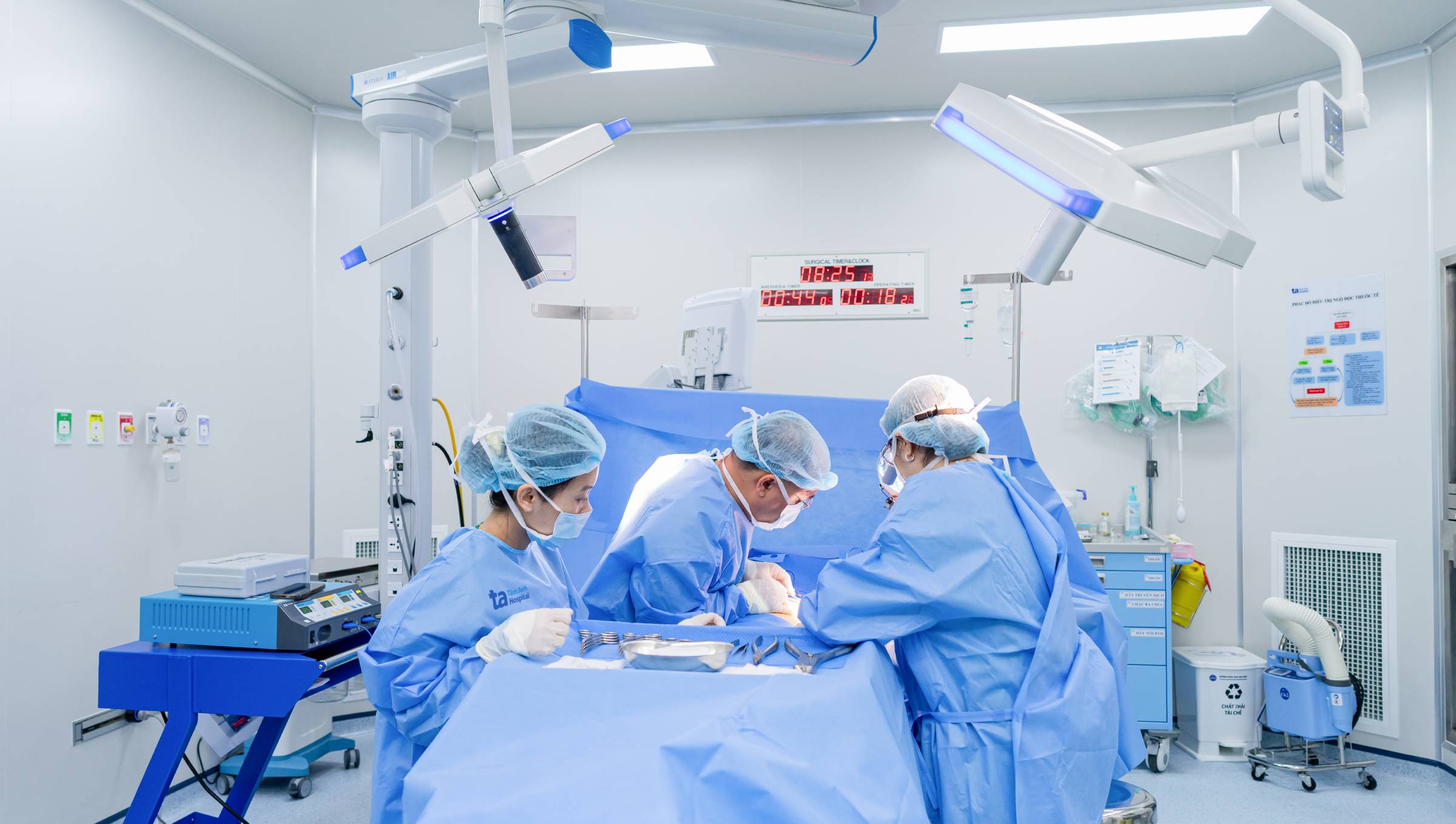14-year-old An was admitted to Tam Anh General Hospital in Ho Chi Minh City with a severe chest deformity, classified as a grade 4 pectus excavatum. His sternal depression measured 5 cm deep, restricting the space for his heart and lungs to function properly. This caused shortness of breath and prevented him from participating in sports. To minimize disruption to his schooling and allow for optimal post-operative care, his family opted to schedule the surgery during the summer break.
Dr. Nguyen Do Trong and his surgical team created a tunnel across An's chest and inserted two metal bars to lift and support the depressed sternum. This procedure restored the normal shape of his chest, improving respiratory function and reducing pressure on his heart and lungs. An recovered well after a week of post-operative care and was subsequently discharged.
A month later, at his follow-up appointment, An's cardiopulmonary function was significantly improved. He no longer experienced shortness of breath, his nutritional intake had improved, and his overall quality of life was enhanced.
 |
Dr. Trong (center) operating on the patient. *Photo: Dinh Lam* |
According to Dr. Trong, pectus excavatum is a congenital chest wall deformity characterized by a depressed sternum and ribs, creating a concave appearance in the chest. It's more common in boys than girls. Factors increasing the risk include abnormal rib cartilage development and connective tissue disorders such as Marfan and Ehlers-Danlos syndromes.
The severity and symptoms vary. Physical manifestations include a noticeable depression in the center of the chest, often accompanied by rounded shoulders and a protruding abdomen. Moderate to severe cases can cause shortness of breath, especially during exertion, reduced stamina, chest pain, rapid heartbeat, palpitations, and fatigue. Surgery is recommended before the age of 12 when the bones are more pliable and easier to reshape.
Tam Anh General Hospital in Ho Chi Minh City sees a surge in pediatric patients during summer break. Many undergo procedures for non-life-threatening conditions such as circumcisions, hernia repairs, hydrocele treatment, undescended testicle correction, buried penis repair, hypospadias correction, thyroglossal duct cyst removal, polydactyly correction, and benign soft tissue tumor removal. The summer break allows families more time to care for their children during recovery.
Dr. Trong emphasizes that each pediatric condition has an ideal treatment window. Doctors determine the most appropriate treatment plan based on the specific defect, its severity, underlying cause, and the child's age. This approach optimizes outcomes, minimizes hospital stays, and ensures normal physical and psychological development.
Many children with these conditions remain undiagnosed. Dr. Trong advises parents to prioritize regular check-ups for early diagnosis and timely intervention.
Hoai Thuong
*The patient's name has been changed.
| Readers can submit questions about children's health here for doctors to answer. |












